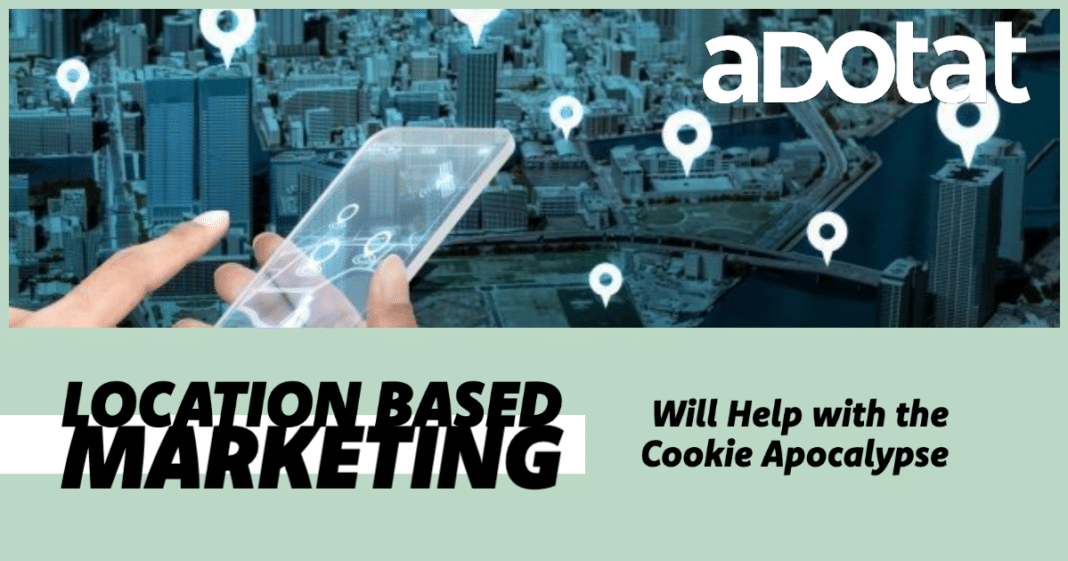As the use of cookies and other tracking technologies has come under scrutiny, location-based advertising has emerged as a promising alternative for advertisers looking to reach consumers in a more privacy-sensitive way.
Campaigns for targeted programmatic advertising have grown more cost-effective and goal-oriented as advertisers have started to take location into account.
While a variety of elements affect the success of advertising efforts, location becomes especially important for companies with physical stores. Businesses can now use data and technology to create campaigns that are more precise, relevant, and effective than ever before.
Location-based advertising is a form of advertising that uses location data to target ads to users in specific geographical locations. This type of advertising has become increasingly popular in recent years with the rise of mobile devices and location-tracking technologies.
One of the main advantages of location-based advertising is that it allows businesses to target ads to users who are likely to be in the vicinity of their physical location. For example, a restaurant might use location-based advertising to target ads to users who are near their location, in the hopes that they will come in for a meal.
Similarly, a retail store might use location-based advertising to target ads to users who are nearby, in the hopes that they will come in and make a purchase.
Another advantage of location-based advertising is that it allows businesses to target ads to users based on their specific location-related interests. For example, a tourist attraction might use location-based advertising to target ads to users who have recently searched for information about local attractions, or to users who have recently checked in at other tourist attractions nearby.
In addition, location-based advertising is more privacy-sensitive. Advertisers using location-based advertising typically do not collect personal identifying information and use anonymous location data, meaning consumers’ personal information is less likely to be shared with other companies without consent.
Location-based advertising is poised for big growth over the next decade. In 2021, the value of the worldwide location-based advertising market was estimated to be USD 69.69 billion. It is anticipated to grow at a CAGR of 17.1% from now until 2030, reaching an estimated value of USD 288.53 billion (2022-2030).
According to a study by Factual, 9 out of 10 marketers feel that LBA increases sales. The study also found that the customer base increased by 86% and that customer engagement increased by 84%.
LBA is a versatile marketing tool that may be used on a variety of platforms. According to same research, 81% of LBA users utilize mobile as their primary channel. The figures for advanced TV are 49%, connected speakers are 47%, cars are 28%, and digital out of home is 47% on the other channels.
Grand View Research estimated that the global location-targeted advertising spend would be USD 62.35 in 2019 and projected a CAGR of 17.4% from 2020 to 2027
Why is Location Based Advertising So Powerful?
When you’re looking for a new place to shop, you probably do some research before you go. You read reviews, check the local business listing to see what hours it’s open, and maybe even use social media to research the company’s operations.
That means that when you’re ready to buy something in person, you’ll have done some research online first—and if the location of the store isn’t displayed on its website, another retailer whose location is displayed online will win your business.
Branding is important, but local marketing provides advantages like attracting and persuading local consumers. When customers are looking for your company online, you need to have a strong marketing plan. Additionally, it might aid in developing a local clientele of devoted supporters of your company. It is extremely beneficial to encourage local customers to visit by developing deals and marketing that make seGPS marketing.
GPS marketing, or geolocation marketing, uses the global positioning system (GPS) to determine a device’s location and target promotions based on this location information. Practically every modern mobile device uses GPS location technology, which is accurate to within about 30 feet. This makes it possible for businesses to target promotions based on where a person is as they move around town.
What are some of the main types of LBA?
1) IP Address Markteing: One of the simplest ways to get started with IP marketing is to use the IP address of your customers’ computers. Every computer or device connected to the Internet has an IP (internet protocol) address. IP address marketing lets you use that location information to target your marketing.
2) GPS marketing. GPS marketing, or geolocation marketing, uses the global positioning system (GPS) to determine a device’s location and target promotions based on this location information. Practically every modern mobile device uses GPS location technology, which is accurate to within about 30 feet. This makes it possible for businesses to target promotions based on where a person is as they move around town.
3) Geofence Advertising: Geofencing marketing is a way to reach out to people who are physically within a certain area. They can be set up as virtual locations or radiuses, and they allow you to market to people who are located within that radius.
Related to that, proximity marketing allows you to target consumers within range of a geofence you have previously established for your advertising campaign.
4) Beacon marketing, also known as beacon advertising, allows you to use physical devices called “beacons” on the premises of a business to communicate marketing efforts to people within range of that beacon.
If someone is near your beacon, they can receive messages from your business through their phone. The messages can be anything from coupons or ads to invitations to events or reminders about appointments.
Who are some companies involved in Location Based Advertising?
1) Propellant Media has been on the cutting edge of location-based techniques and has frequent webinars on how to use geofencing. They even promote Facebook/Instagram Geofencing. With their Geo fencing and addressable (household) geofencing technology, you can give advertisers the competitive edge they’ve been looking for and that none of their competitors are using. They translate location data into real-time insights that help you understand where your customers are and what they’re doing. This allows us to create customized and targeted mobile advertising campaigns with precision accuracy.
2) Simpli.fi has been pushing LBA for years now and even has this great little guide they made a few years ago about competitor conquesting. Simpli.fi is proud to lead the charge in location-based targeting solutions. We’ve been there since the dawn of Geo-Fencing, and we’re still going strong. Whether you’re looking for Addressable Programmatic or something more granular, we can help you find your audience like never before.
3) Agility Ads: When you’re running a campaign, it’s important to know how your audience is responding. With custom conversion zones, we can track and report on foot traffic location data when your audience visits your business or brick and mortar store. With this insight, you’ll be able to measure influence and action—which means you’ll get the full picture of campaign performance.










